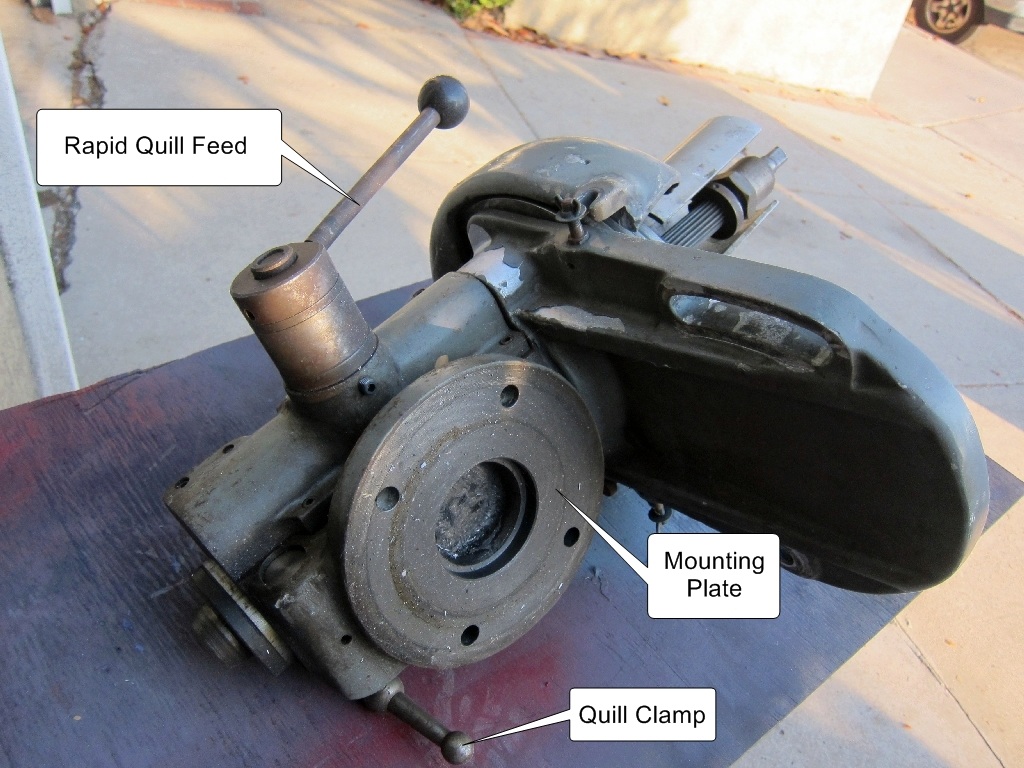
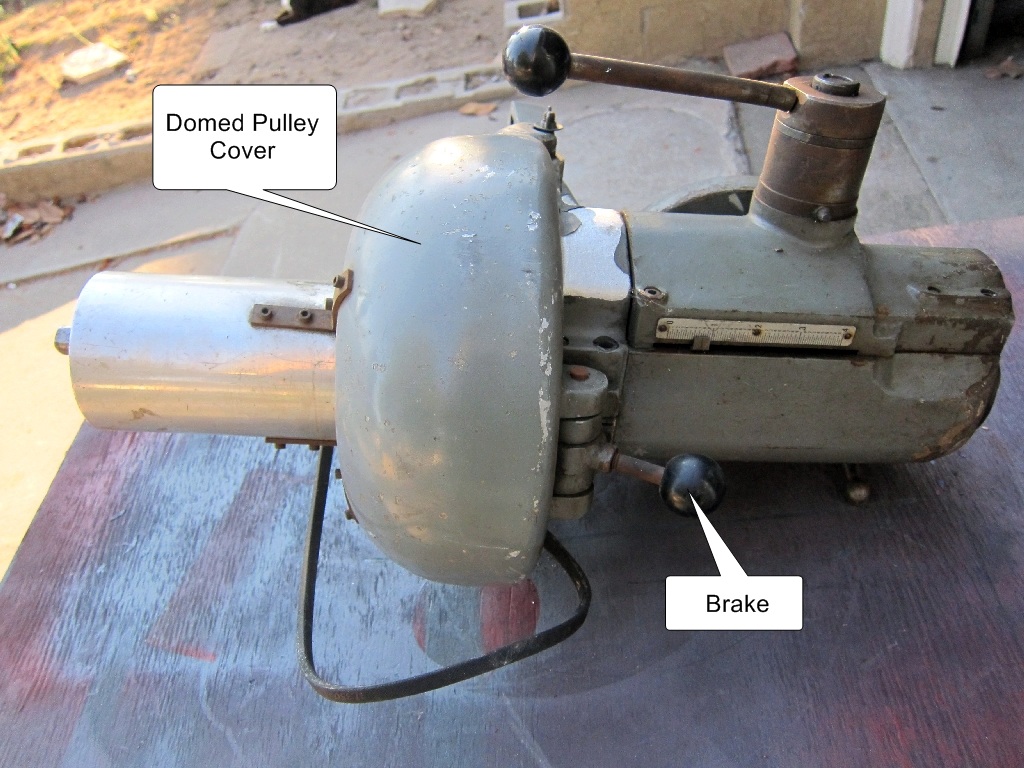
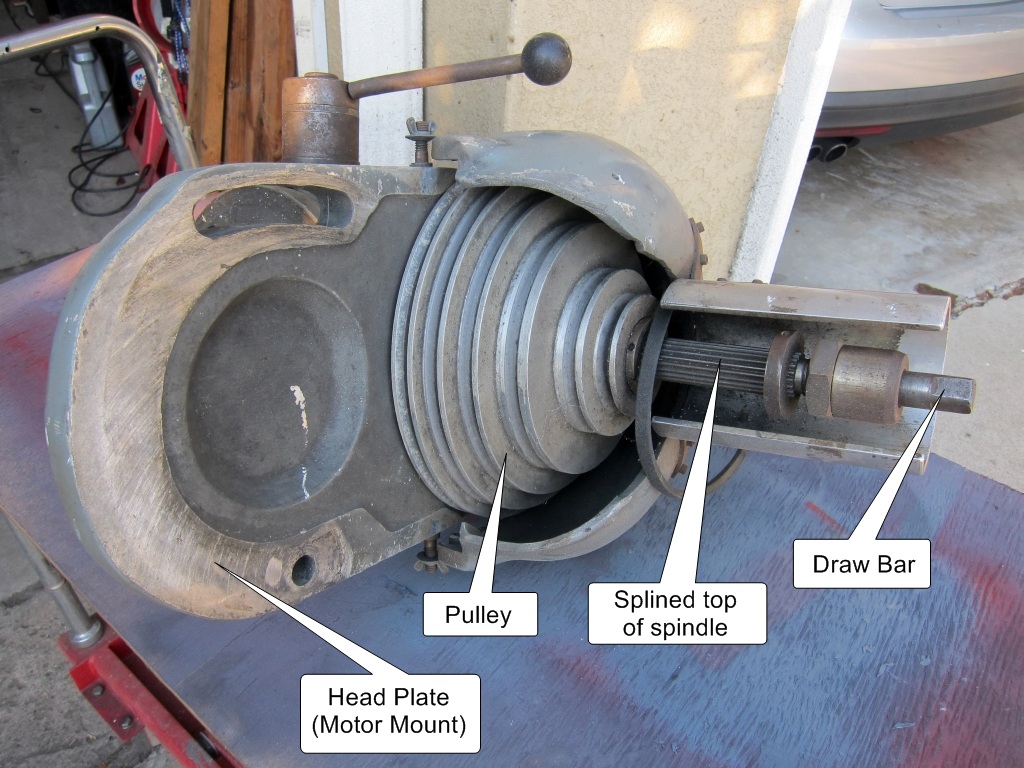
Lets get warmed up by viewing a couple pictures of the head as it sits on my cart. This view is from the back where you can see the mounting plate that connects it to the end of the ram.
A view from the front showing the brake right under the domed pulley cover. The brake just rubs against the pulley to help it come to a stop quicker.
And finally a view from the top back showing the pulley and the splined top of the spindle.
Ok .. lets get started with the tear down.
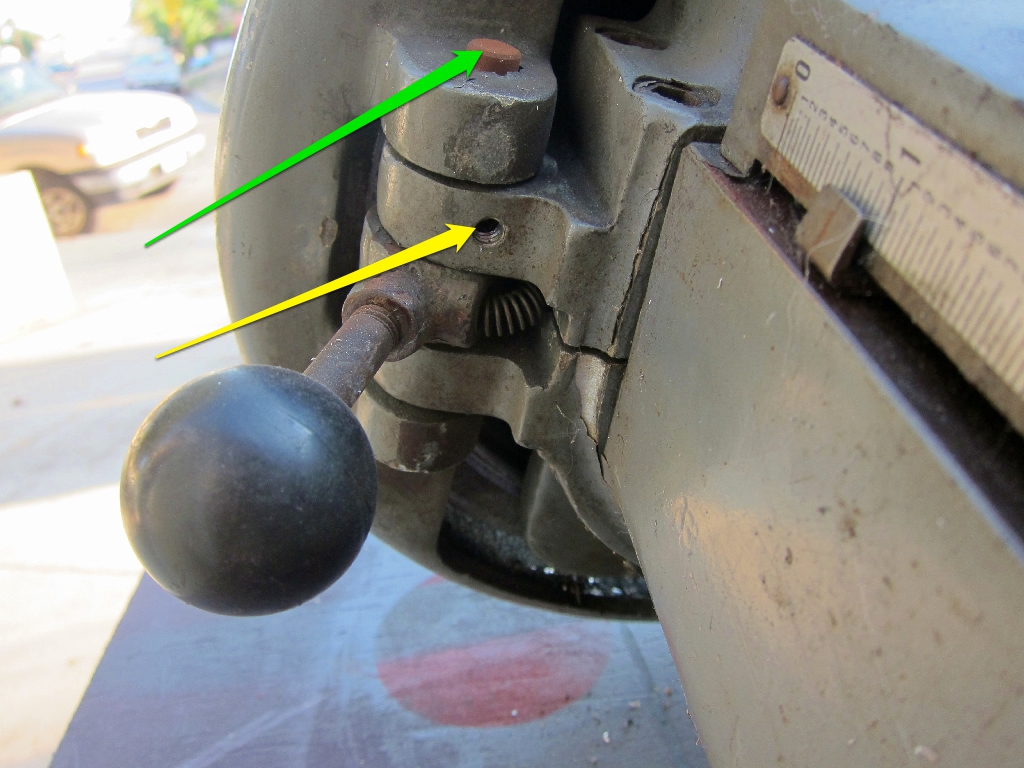
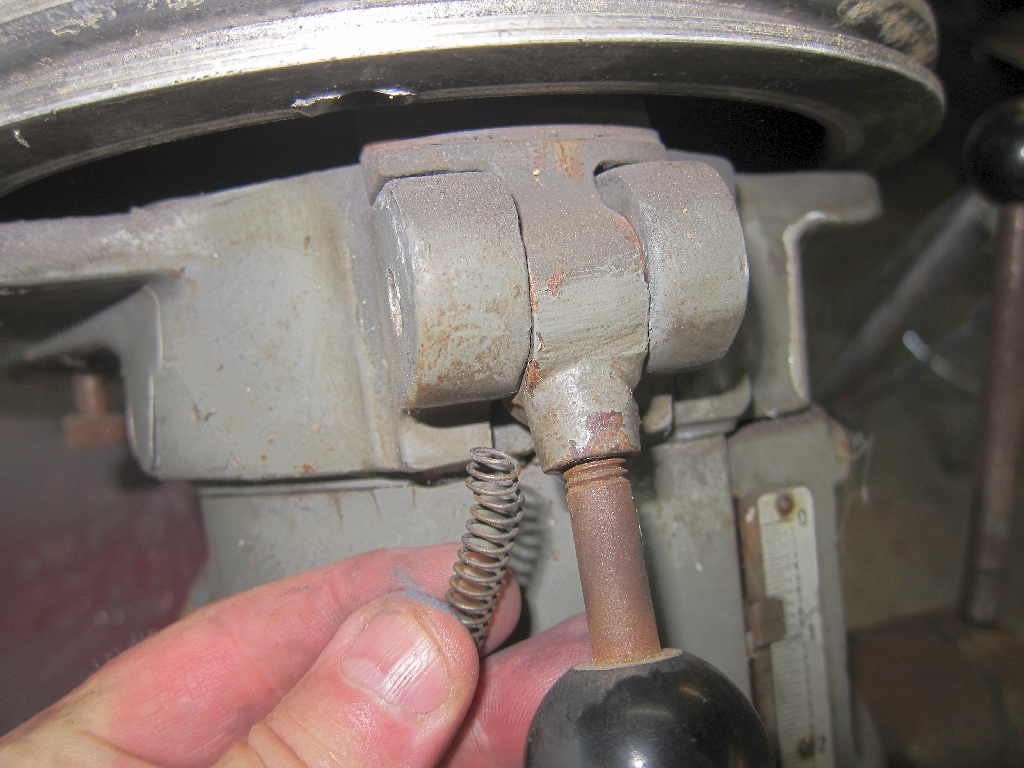
The first thing I did was get that dome off. You have to loosen the set screw and drive out the pin.
After you pull the dome off, the brake will be really loose. It won't actually come off though untill we lift the pulley. But lift the brake up now and take the spring out so you don't loose it.
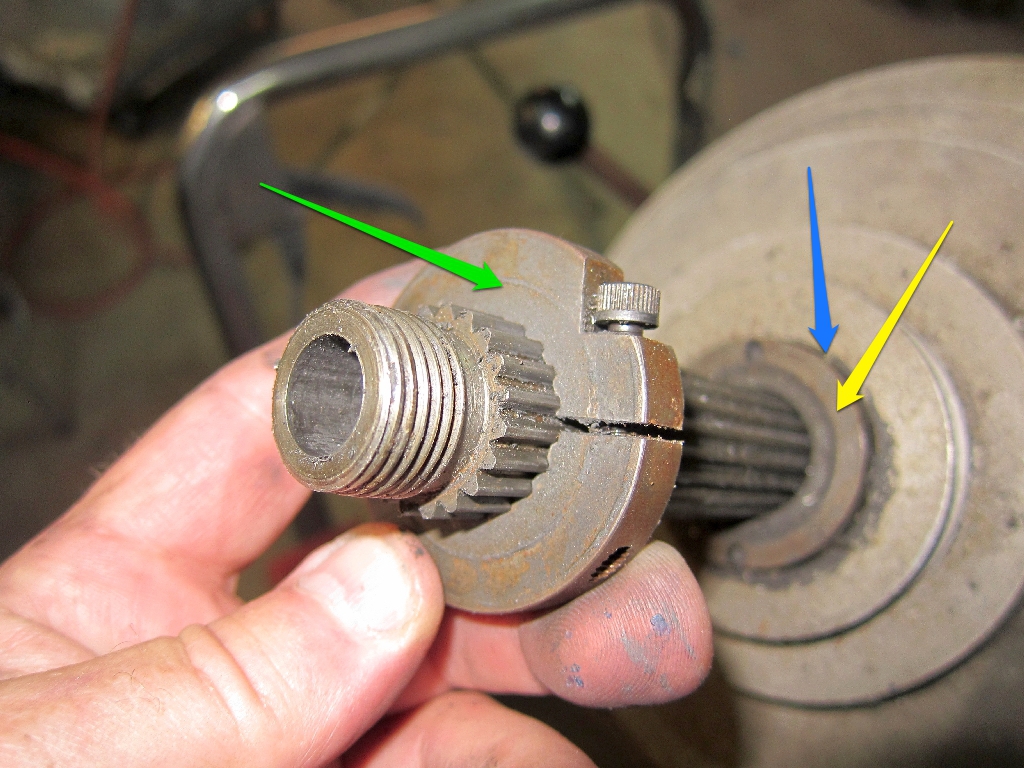
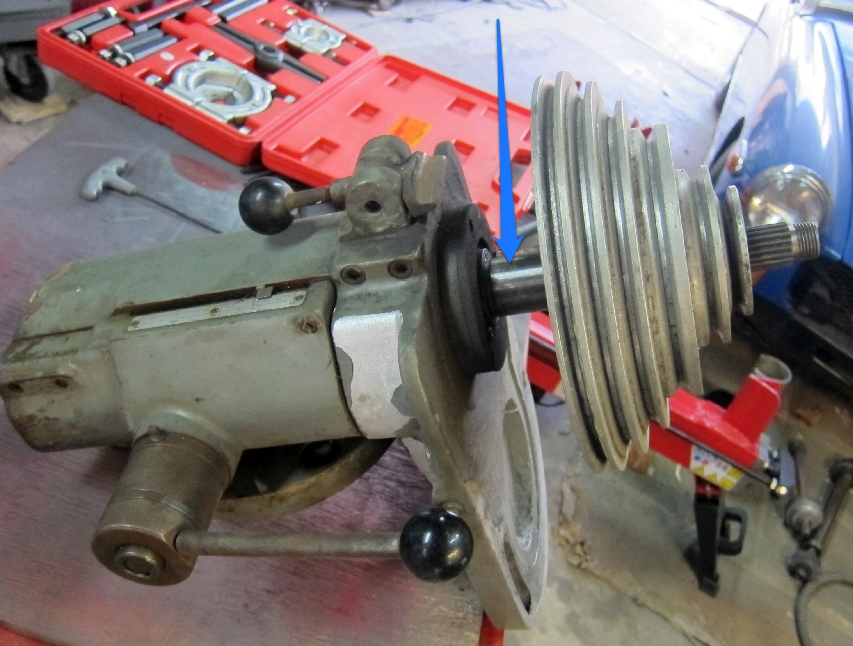
To remove the pulley, you have to lossen the set screw in the side of the Pulley Sleeve Nut And unscrew it. Then remove the Stop Nut from the top of the splines. The pulley should lift right off.
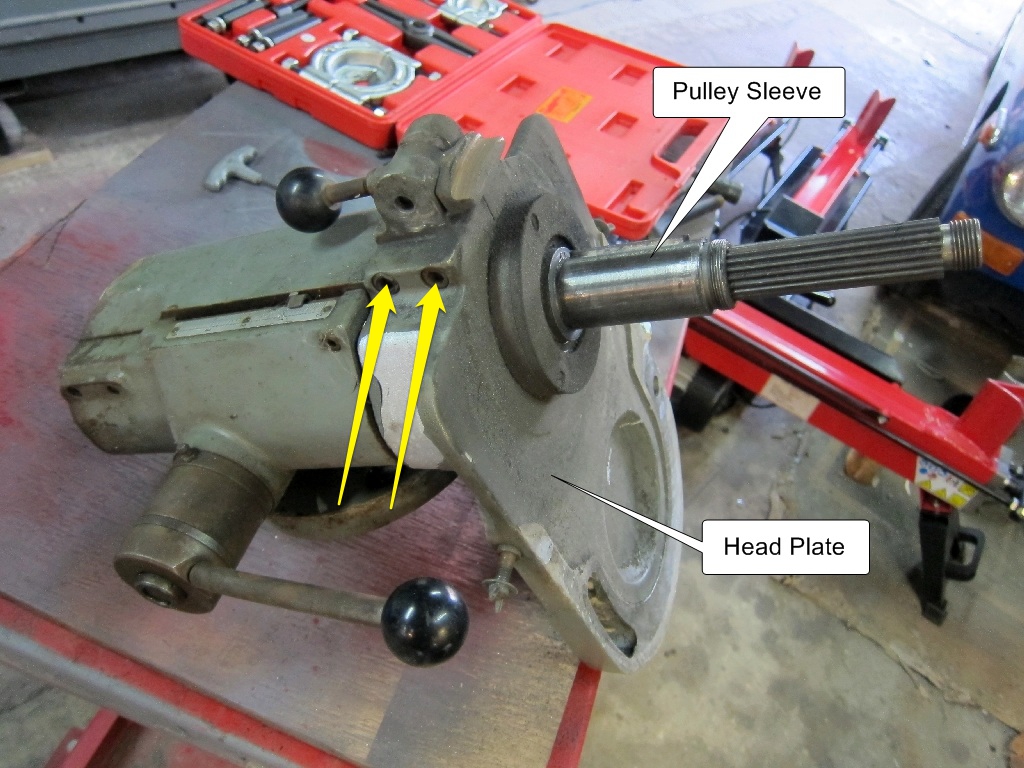
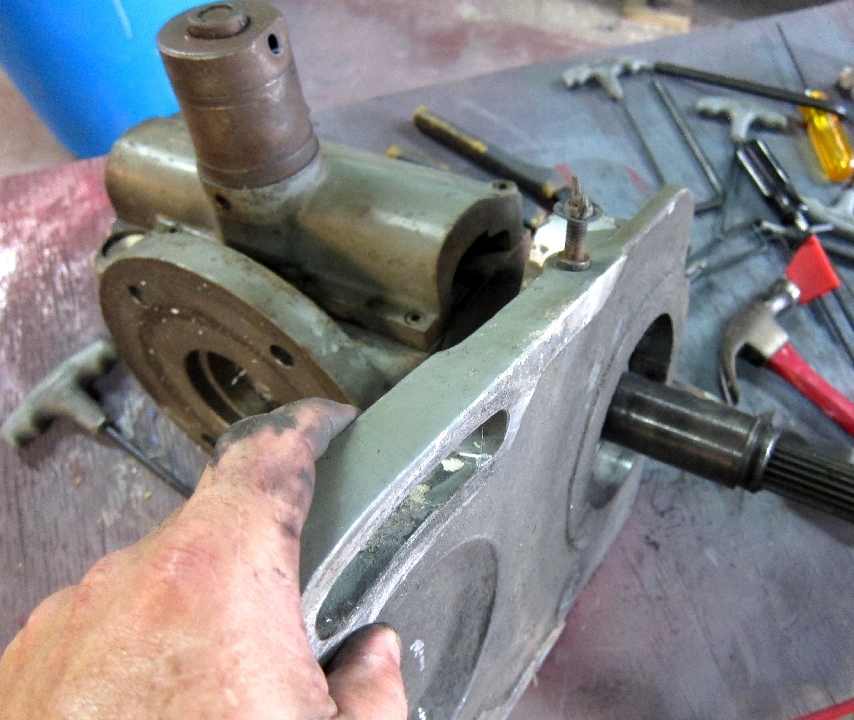
The head plate is simple to get off. Just loosen the two screws and wiggle it off.
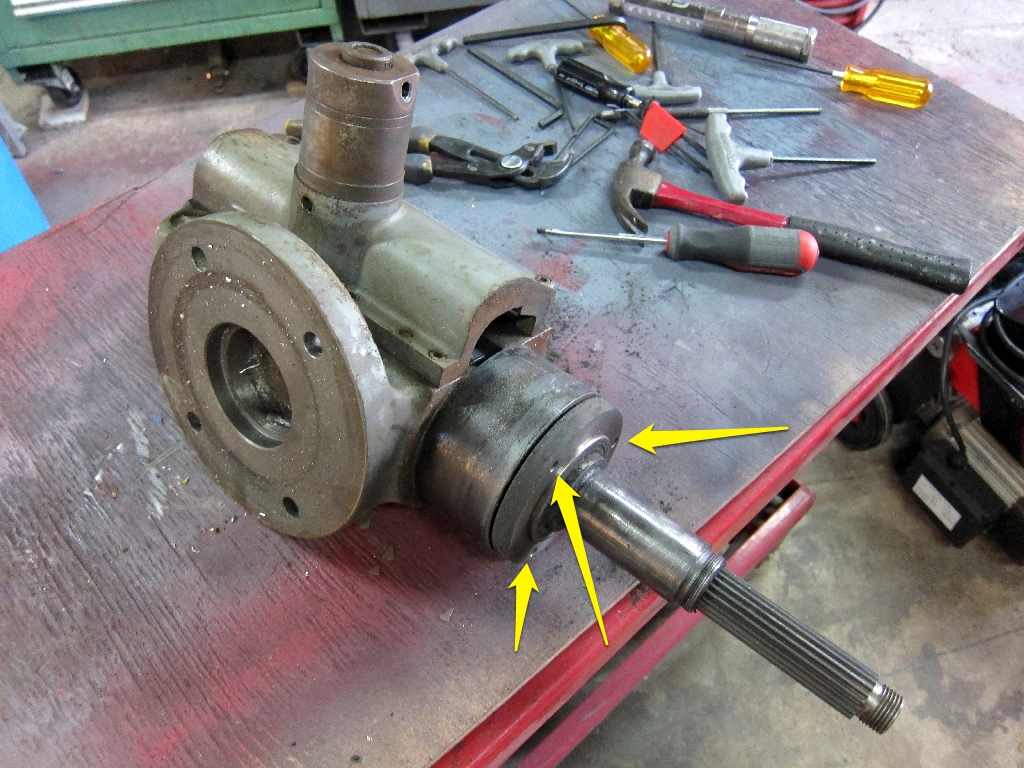
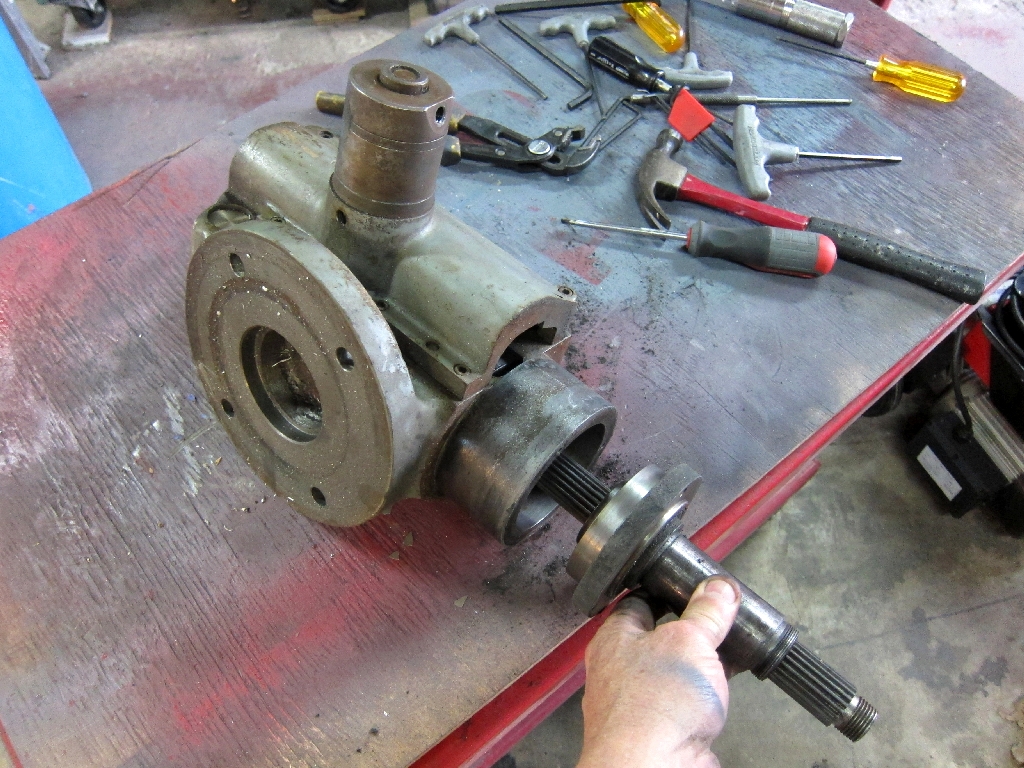
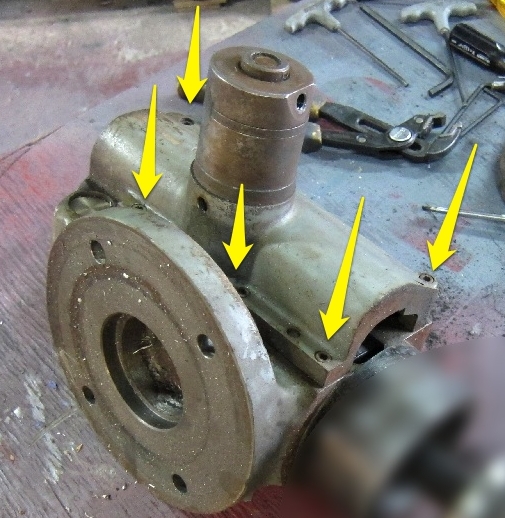
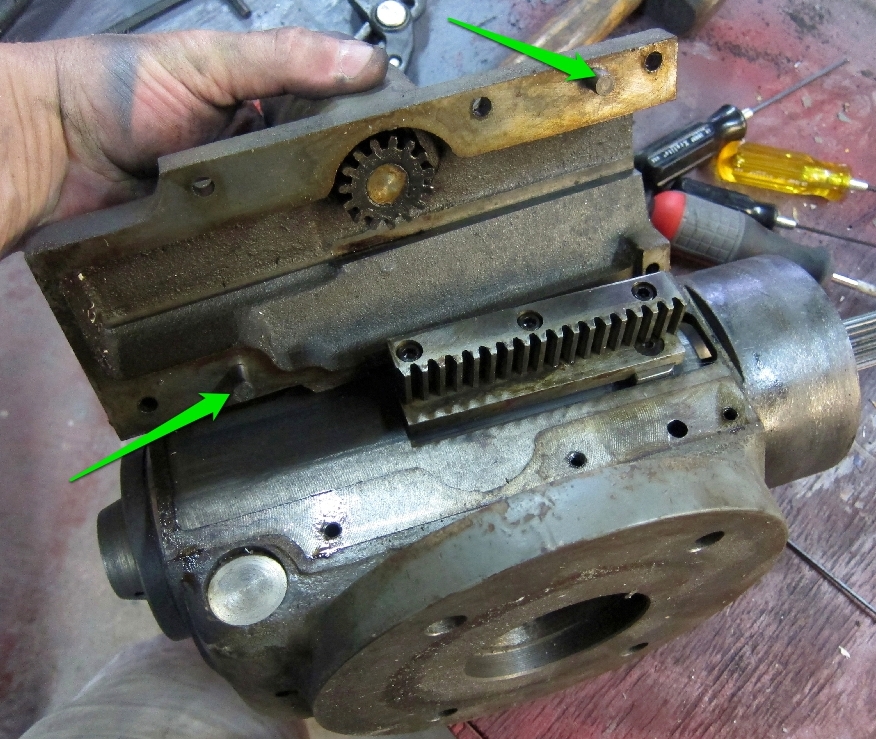
Time to do the quill feed cover. Remove the screws and pry it off. Note that it uses two pins for accurate positioning so it may take some wiggling to remove it.



Unbolt the rack and remove it. Then all that is left is the rack mounting plate and a spacer. Ok .. this is a little bit of a profound moment. I want you to realize that these 3 little pieces (and the stop nut at the top of the splines) are the only thing keeping your quill and spindle from just falling out. Not even the pulley needs to be taken off.
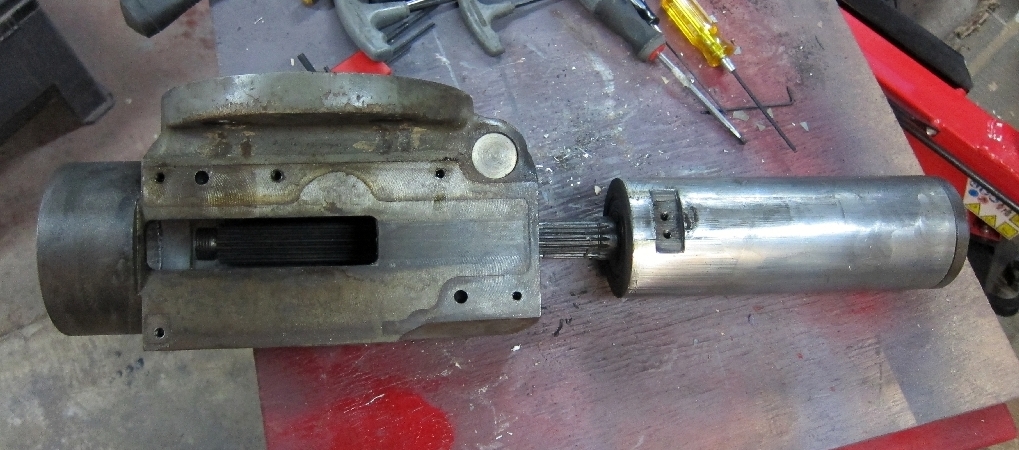
Next is the pulley sleeve. Remove the screws and slide it off. Take a peek inside the sleeve and see the splines.
Out pops the quill and spindle.
Exploded diagrams are nice but I am not a fan of having to refer to legends to find the name of parts. I hope no one takes offense to me taking the liberty of labeling the major parts on this page borrowed from the manual.


The pulley actually sits on a sleeve with internal splines that ride on the splines of the spindle. This allows the spindle to slide up and down within the pulley/sleeve, while locking it for rotary movement.
